May 2024
Planting Harrow Rec's trees
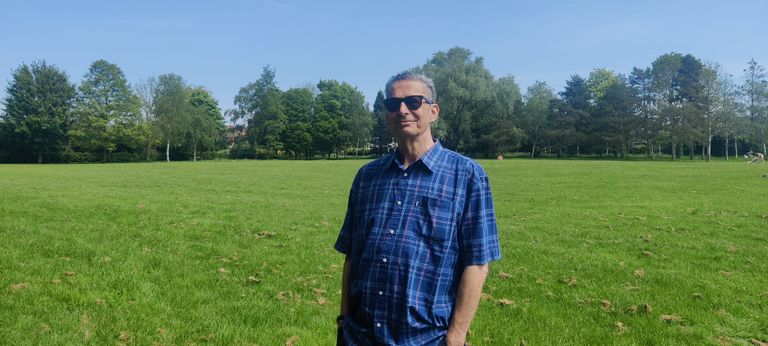
Roger pictured with "his" trees in the background
My name is Roger Kattenhorn, and I was born and raised in Harrow (Kenton). I subsequently moved away in adult life and I now live in Hertfordshire. With the demise of family members in recent years and the dispersal of friends and acquaintances I now find I have less cause to visit the Borough, but when I do, I always take time to visit two groups of trees growing high on the crown of Harrow View. I have a proprietorial, or perhaps it is paternal, interest in these trees, since I was jointly responsible for planting them in the mid- 1980’s.
Harrow Recreation Ground was my daily workplace throughout that distant decade. At that time, if you can believe it, I was one of six gardener/groundsmen employed as permanent staff in that park, along with two regular park keepers. In the summer our number rose to nine with the addition of a student employed to collect fees from the public using the many facilities there.
With hindsight Harrow Borough Council, in common with most other local authorities using the ‘direct labour’ system, was an exemplary employer. As employees we were all given the opportunity for occupational training and throughout most of my time in the park, every Monday I would attend a horticultural college named Norwood Hall, near Southall. (It is now a Sikh Gurdwara). During those years I earned myself a fistful of professional City and Guilds qualifications, in both Amenity and Decorative Horticulture, and Groundsmanship.
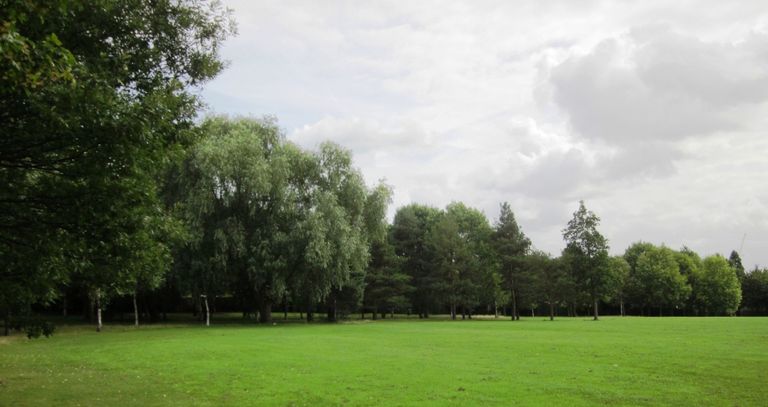
"Planting them is probably one of the more useful things I have done in life "
One particular year, I’m guessing it would have been around 1983-4, we received a delivery into the park; a large number and variety of bare-rooted trees. These were to be planted in two separate copses spread out on the high ground, on either side of the Cunningham Park entrance, covering the north-east and north-west corners.
At that time the park featured a lot of fine turf playing surfaces, the maintenance of which were quite labour intensive, so for this tree planting project only two of our number were delegated to the task; myself and another young chap named Martin Little. We kept a small tractor and trailer in a garage behind the cricket clubhouse and this was used to transport the trees, along with our tools and a number of tubs of liquid fertiliser, up to the planting site. All of the pits for the trees were spade dug by hand and the tree roots dunked in the tubs of fertiliser before planting. This green liquid was made from seaweed which, as a fertiliser, was something of a novelty at the time. Once staked and banded the planted trees were then back filled with a mixture of the original clay and compost, making sure not to raise the soil above the original nursery mark.
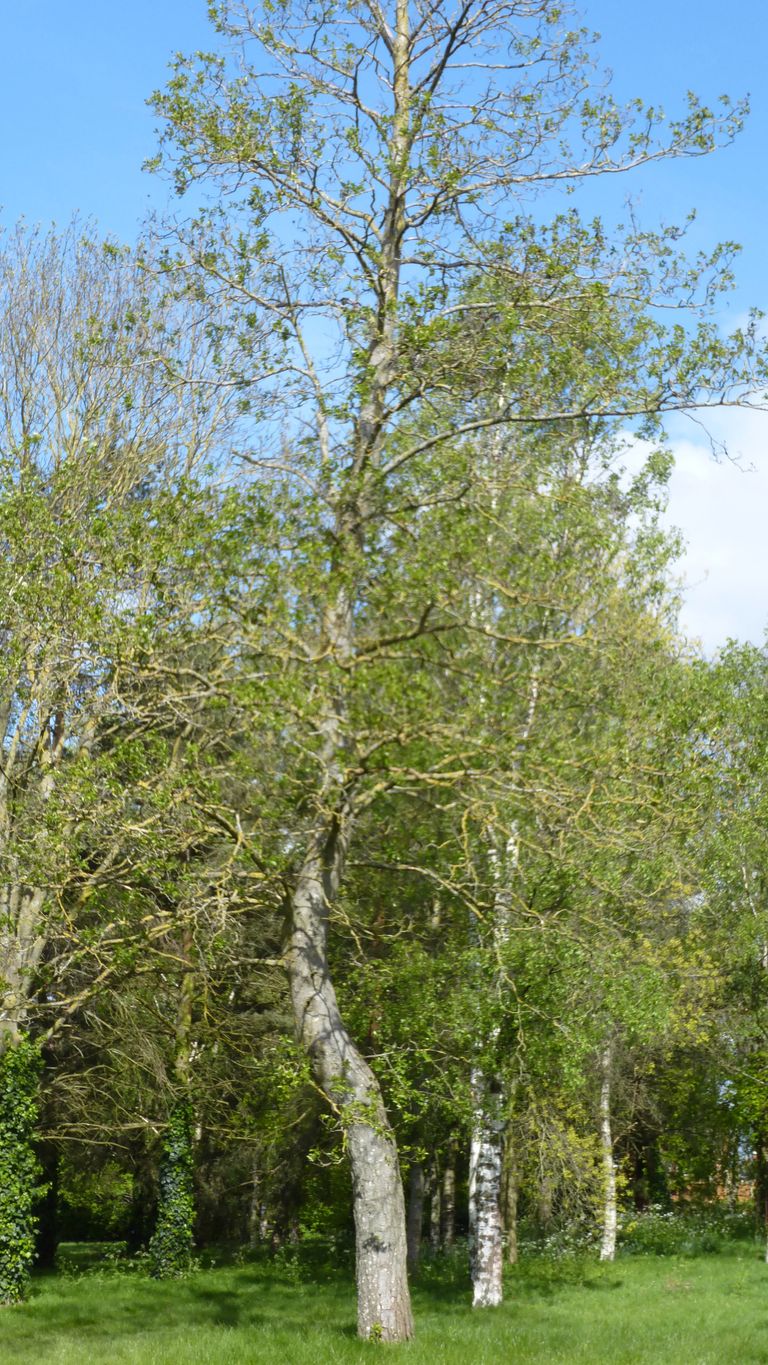
A wonky alder tree
Along with these trees came a planting plan for our guidance. This plan had been drawn up in the Civic Centre Parks Office which, to our semi-autonomous group, always seemed a detached and rather distant HQ. I remember that Martin and I, as well as some of the others, were actually quite dubious about the plan at the time. Possibly our training had made us a little too knowledgeable for the military modelled ‘chain of command’ style of management that was the norm in those days. Anyway, as rather lowly manual underlings we were obliged to plant according to the plan regardless of our private misgivings about the closeness of some of the trees and the incompatible characteristics of some of the neighbouring species.
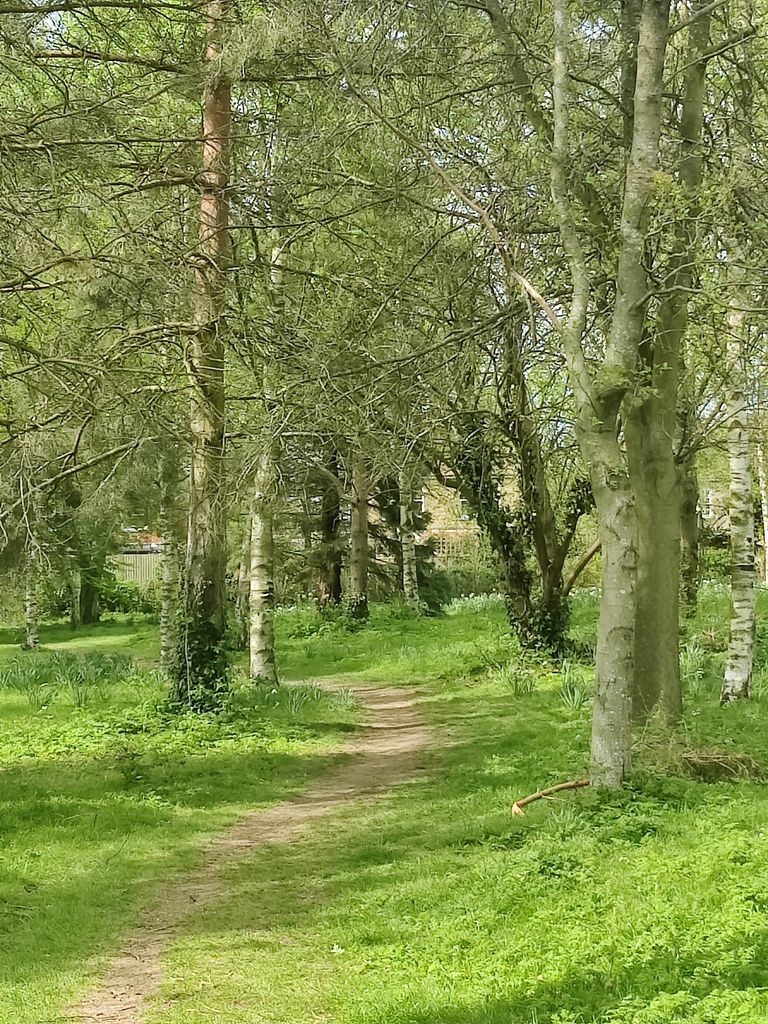
A "People's Path through the copse
One thing I do clearly recall was the presence one day of a ‘time and motion study’ expert who came and observed us as we worked. For Martin and me this was quite a responsibility as at that time all the tasks carried out by council workers were individually valued and linked to a productivity performance scheme which partly determined our pay. Therefore, in our planting of this particular tree we would be likely to set the time allocated for all other tree planting throughout the borough! As you can imagine Martin and I made as much of a meal of the process as we could plausibly get away with by digging a fulsome textbook pit with the straightest of sides and forking over the base, etc.
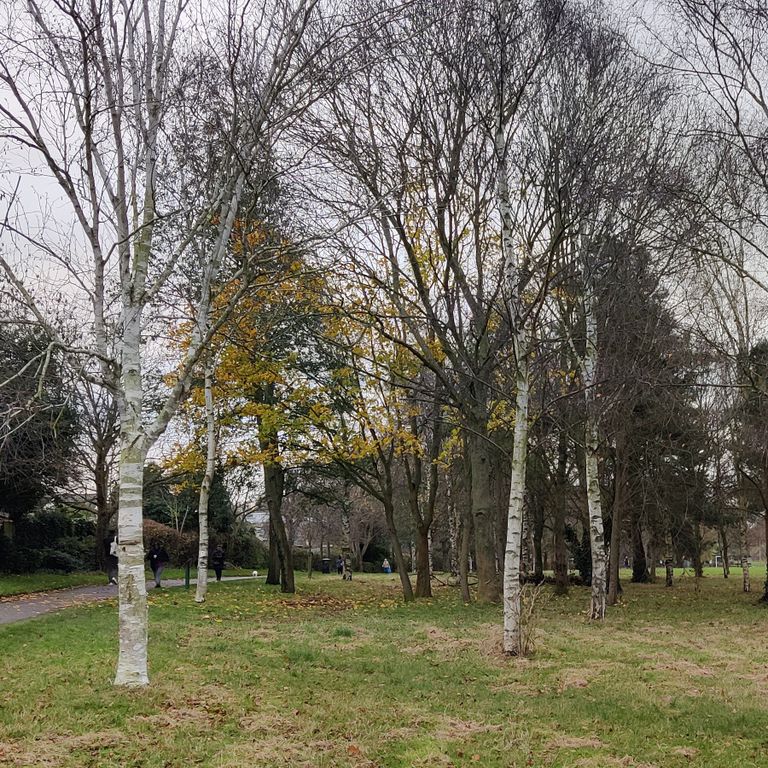
The north west copse in winter
Now when I visit these trees in their maturity, I have a great sense of satisfaction with the aspect they present, maybe something akin to parental pride. Planting them is probably one of the more useful things I have done in life and it is certainly one of the few achievements that will live on after I have left it. Many, like the willow, are now soaring and magnificent, though there is also a little grim vindication of our original doubts as some of the incautiously planned Scots pines remain stunted and unhappy, and a cluster of ‘too close’ hornbeams still prompt a shake of the head. Nevertheless, I’m happy to see them all again and the shimmering quiver of those high poplar leaves is a good enough legacy for any man.
